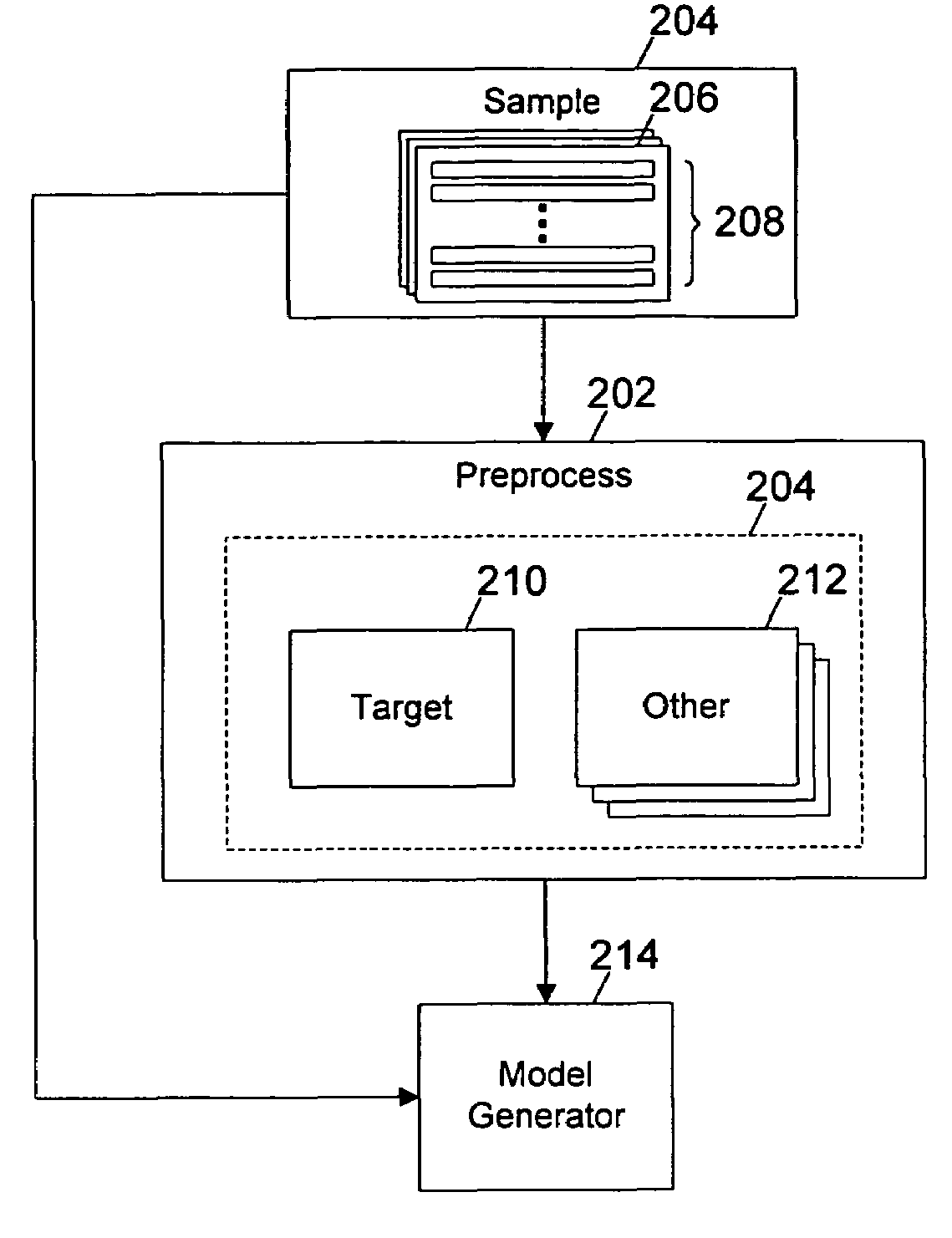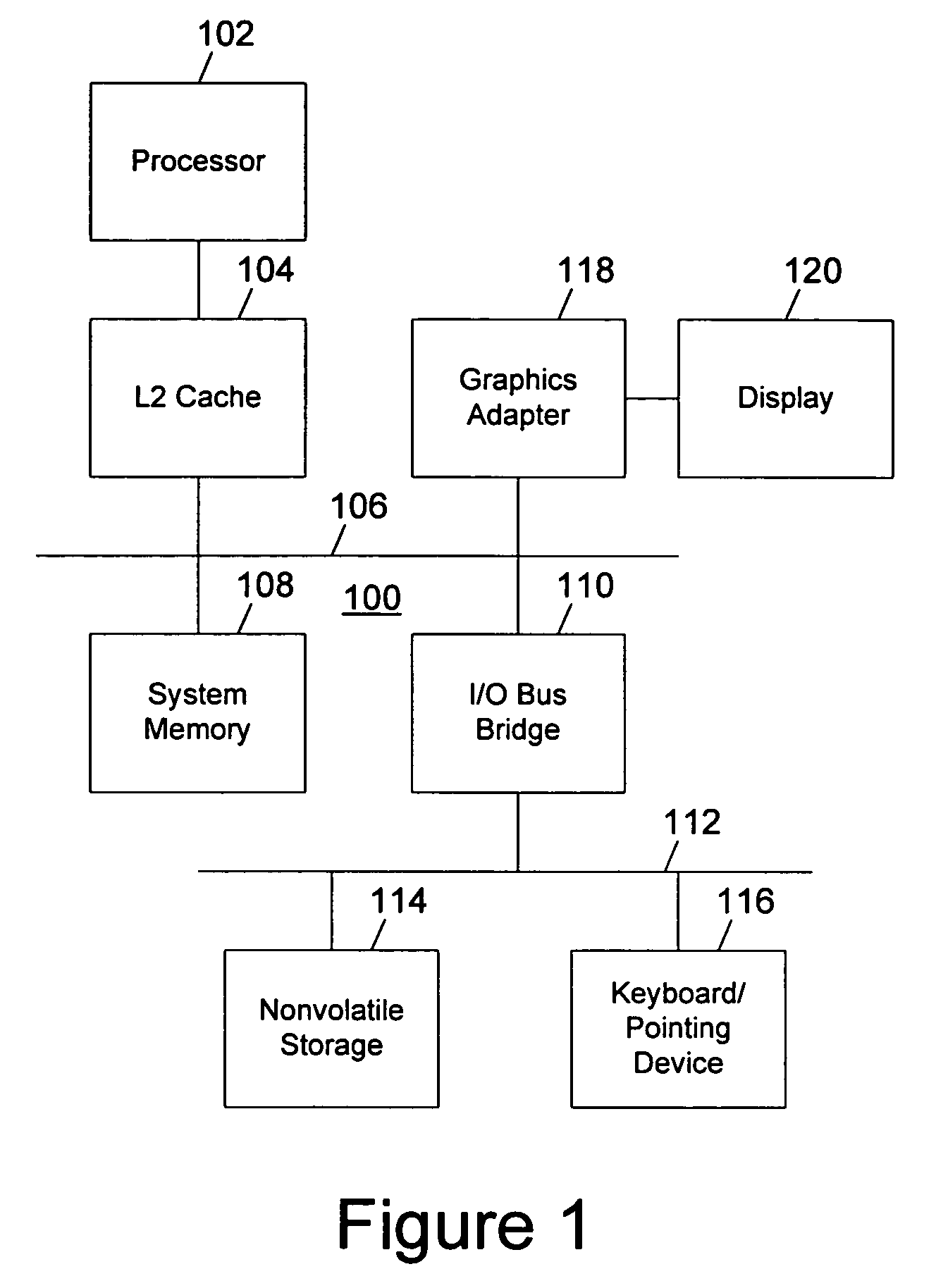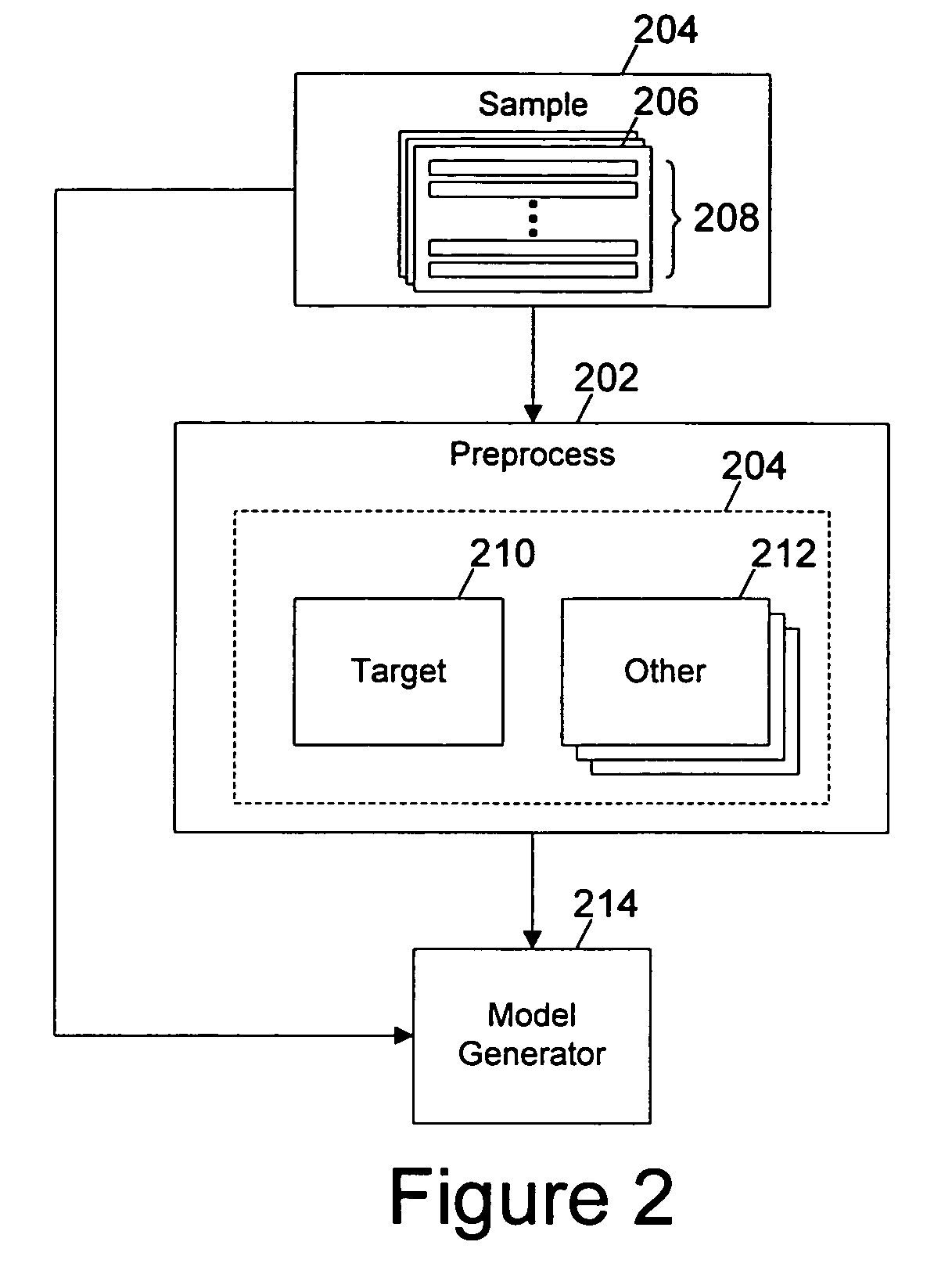Method for computing models based on attributes selected by entropy
a computing model and attribute technology, applied in the field of data analysis, can solve the problems of computational inefficiency of generating a predictive model based on that many individual characteristics, spreading the cost of data collection among multiple projects, and introducing large data samples for predictive models
- Summary
- Abstract
- Description
- Claims
- Application Information
AI Technical Summary
Benefits of technology
Problems solved by technology
Method used
Image
Examples
Embodiment Construction
[0019]With reference now to the figures, and in particular with reference to FIG. 1, a block diagram of a data processing system in which a preferred embodiment of the present invention may be implemented is depicted. Data processing system 100 may be, for example, one of the models of personal computers available from International Business Machines Corporation of Armonk, N.Y. Data processing system 100 includes a processor 102, which in the exemplary embodiment is connected to a level two (L2) cache 104, connected in turn to a system bus 106. In the exemplary embodiment, data processing system 100 includes graphics adapter 118 also connected to system bus 106, receiving user interface information for display 120.
[0020]Also connected to system bus 106 is system memory 108 and input / output (I / O) bus bridge 110. I / O bus bridge 110 couples I / O bus 112 to system bus 106, relaying and / or transforming data transactions from one bus to the other. Peripheral devices such as nonvolatile sto...
PUM
 Login to View More
Login to View More Abstract
Description
Claims
Application Information
 Login to View More
Login to View More - R&D
- Intellectual Property
- Life Sciences
- Materials
- Tech Scout
- Unparalleled Data Quality
- Higher Quality Content
- 60% Fewer Hallucinations
Browse by: Latest US Patents, China's latest patents, Technical Efficacy Thesaurus, Application Domain, Technology Topic, Popular Technical Reports.
© 2025 PatSnap. All rights reserved.Legal|Privacy policy|Modern Slavery Act Transparency Statement|Sitemap|About US| Contact US: help@patsnap.com



